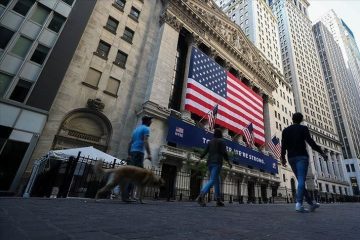How the 2023 Bank Crisis Can Still Be Felt in 2024

The Federal Reserve may be poised to loosen the reins on the economy with interest-rate cuts. But for now, banks are still keeping themselves on a relatively tight leash.
December featured a few notable moves in the market for short-term funding, often referred to as the “plumbing” of the financial system. That included brief jumps in the Secured Overnight Financing Rate, which is a measure of what it costs to borrow cash overnight collateralized by Treasury securities.
Of course, year-end and even month-end volatility in money markets are not unusual, since banks often tidy things up before closing their books for the period. Nor were these episodes as acute as the surge in overnight rates seen back in 2019.
What is catching people’s attention, though, is that these things are also popping up at a time when there seems to be more than enough money sloshing around in the banking system, in the form of banks’ reserve balances at the Fed. Fed Chair Jerome Powell said in November that “it’s hard to make a case that reserves are even close to scarce at this point,” when reserve balances were about $3.3 trillion. In the last reading, they were over $3.4 trillion.
But just because banks have resources available doesn’t mean they will necessarily use them to lend or facilitate trading. Instead, banks seem to have kept up some of their defensive behaviors from the spring banking crisis—even as investors seem ready to put the failures of Silicon Valley Bank and First Republic behind them. The KBW Nasdaq indexes for bigger banks and for regional banks are both up by more than 25% over the past three months.
Lenders right now are sitting on a sizable position in cash: Roughly 15% of U.S. commercial banks’ assets were cash as of the Fed’s most recent data. That is below the peak levels during the pandemic but well above the roughly 10% share back at the end of 2019.
Being highly liquid was one way that banks made it through the crisis of early 2023, helping to fend off investor worries that deposit flight would quickly drain their liquid resources and force sales of bonds at big losses, depleting capital levels. Perhaps bankers’ memories of the crisis may in this case be longer than investors’.
“The best antidote to the type of issues that plagued the banks that went under [in 2023] is more liquidity, more cash,” says Mark Cabana, head of U.S. rates strategy at BofA Securities. “Banks are behaving in ways that imply that their lowest comfortable level of reserves is much higher than it was historically,” he added.
Washington may be a key part of the story. Banks are preparing for new rules on capital and liquidity from the Fed, as well as potential changes to the Federal Home Loan Bank system that they leaned on heavily for borrowing during the 2023 crisis. And banks that act as primary dealers for the recent surge of sales of Treasurys have to absorb that issuance, which means securities can linger on their balance sheet until they find end buyers.
What all this means is that banks’ reluctance to lend more might last a bit longer than one might hope in a solid economy. For depositors, it might mean that banks are going to be willing to pay high rates for longer, just to secure that cash.
There can also be effects on market volatility, if banks’ trading desks aren’t able to absorb an increase in activity by clients. “The demand for funding is outstripping the ability of dealers to provide financing,” Barclays wrote in a note this week.
Lower rates will be welcome news to many in the financial system. But the after-effects of last year’s strains mean the system’s response to loosening will be far from straightforward.






